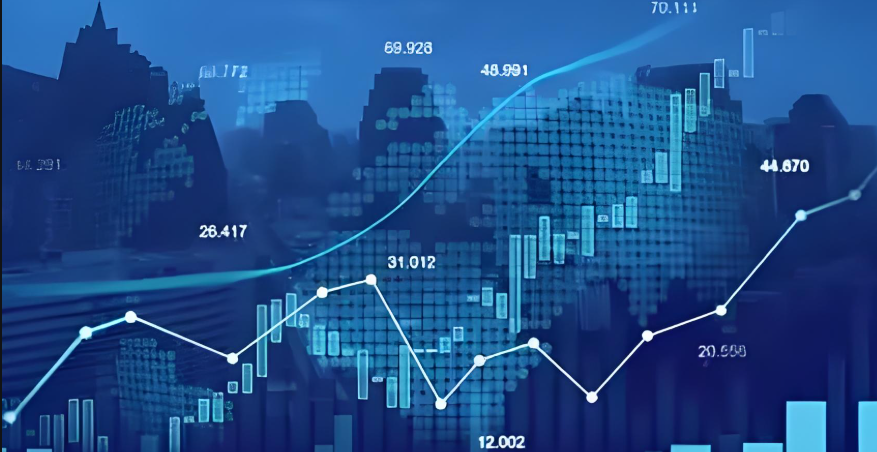The Impact of Energy Price Volatility on the Economy
Advertisements
The escalating energy prices have become a focal point of discussion within the global marketplace as the world gradually emerges from the economic shadows cast by recent crises.The sharp increases in the costs of crude oil and natural gas not only inflate operational expenses for businesses but also significantly strain the wallets of everyday consumers.As these prices soar,they contribute to a rising tide of inflation,leading to volatile market expectations that ripple across economies.Those watching the energy sector closely are beginning to grasp the profound implications that soaring energy prices hold for inflation rates,market sentiment,and broader global economic health.
To grasp the implications of soaring energy prices on inflation,it’s imperative to recognize how tightly woven energy costs are with production expenses.Energy serves as a foundational input in a multitude of industries,with manufacturing and transportation sectors relying heavily on fuel and electricity.As crude oil and natural gas prices spike,essential commodities such as transportation services and electricity see concurrent price hikes.Businesses,in turn,are often forced to increase their product prices to safeguard their margins,leading to a cascading effect on the inflation levels observed across economies.
The ripple effects stretch into the daily lives of consumers as well.For instance,as energy prices rise,households grapple with escalating heating,electricity,and commuting costs.Such increases effectively squeeze disposable income and alter purchasing patterns,as consumers tighten their belts and deprioritize non-essential expenditures.This pullback in consumer spending stifles market demand and compresses economic liquidity,resulting in amplified inflationary pressures that taint the economic landscape.
Furthermore,these changes usher in a wave of uncertainty surrounding market expectations.As energy prices fluctuate wildly,investors find themselves grappling with doubts about future economic momentum.This volatility isn't confined to energy markets alone; it spills over into equities,bonds,and commodities,spawning heightened fluctuations as investor sentiment swings.The instinctive response often leads them toward "safe-haven" assets like gold,amplifying market disruptions even further.With inflation expectations holding practical weight,they can shape central bank policies and have far-reaching ramifications for long-term economic stability.
This perplexing scenario forces central banks around the globe into a corner,prompting serious reconsideration of their monetary strategies.Confronted with surging inflation,monetary authorities may find themselves compelled to adopt tighter monetary policies that typically involve raising interest rates.This decision,while aimed at curbing inflation,casts a long shadow over consumption and investment demand,potentially impeding economic growth.It creates a precarious balancing act for policymakers trying to navigate a course through the turbulent waters of inflation and economic stability.
The conundrum of rising energy prices is also deeply intertwined with diverse global phenomena beyond just pure supply and demand mechanics.Geopolitical dynamics play an increasingly critical role; tensions among major energy-producing nations can dramatically shift supply chains and prices.For instance,disruptions in oil supply due to geopolitical unrest or strategic embargoes can yield stark fluctuations in energy markets,mirroring the volatility seen in previous decades.
Simultaneously,the world is undergoing a significant transition toward green energy in response to climate change commitments. Many nations are vigorously promoting renewable energy sources,creating a chasm in the timing and availability of these alternatives when juxtaposed against the reliance on traditional fossil fuels.Today's energy infrastructure isn't fully equipped to handle such a rapid transition,leaving the world more vulnerable to heating demand—and resulting price spikes—especially as economies strive to recover post-pandemic.
Many nations are vigorously promoting renewable energy sources,creating a chasm in the timing and availability of these alternatives when juxtaposed against the reliance on traditional fossil fuels.Today's energy infrastructure isn't fully equipped to handle such a rapid transition,leaving the world more vulnerable to heating demand—and resulting price spikes—especially as economies strive to recover post-pandemic.
The push for greener energy,although crucial for long-term sustainability,adds a layer of short-term uncertainty to energy supply dynamics.For instance,efforts to diminish reliance on fossil fuels often lead to a decline in supply capabilities,thus amplifying price pressures in the interim.With the recent global resurgence of economies sparked by pandemic recovery,demand for energy has surged,creating a dual challenge of heightened demand and constrained supply.
Looking forward,the journey of understanding and addressing rising energy prices,alongside their economic implications,appears complex but paramount.Countries must grapple with how to stabilize and control these rising energy costs and manage inflation expectations to foster a conducive environment for healthy economic growth.Strategies may encompass heightened investments in green energy innovations,optimization of energy supply chains,and the establishment of balanced fiscal and monetary policies that consider immediate needs and long-term sustainability.
Ultimately,the trends in energy price volatility are not isolated phenomena but resonate globally,underscoring interconnectedness in our modern economy.This emphasizes a call for collaboration among nations as they strive to stabilize energy markets and secure healthier economic prospects.The challenges posed by fluctuating energy prices transcend borders,demanding unified efforts to navigate these complexities together and adapt to hopeful new economic paradigms that can withstand volatile market forces.
Leave a Reply